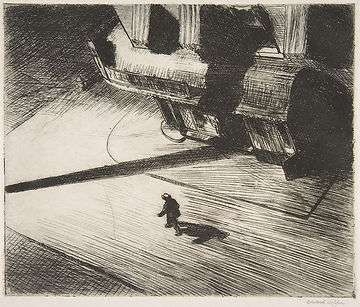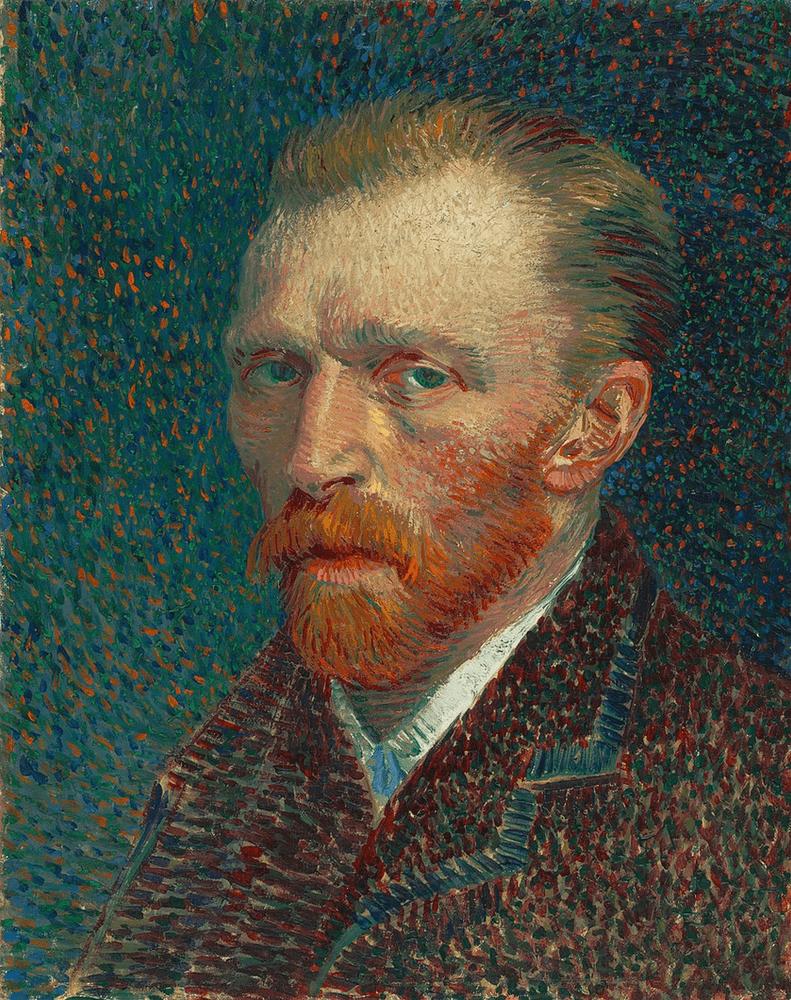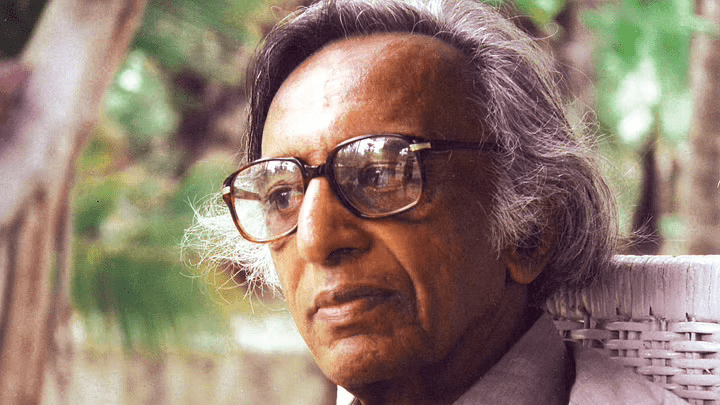In this age of compulsive art-making, what exemplifies the contemporary cool?
Pulp Society, an art gallery and workshop space has set out to define it by reclaiming printmaking from the peripheries and exploring its potential alongside experimental works on paper as a means of expression. Steeped deep in history, the art of printmaking has welcomed reimagination and appropriation over the years. Known to have originated as early as the 1st century AD, during China’s Han Dynasty, it is a medium that has transcended techniques and pushed its own boundaries by experimenting with its various forms, shifting from one paradigm to another. Here, we’re giving you a look at the different modalities of some of the seminal forms of printmaking techniques.

Woodcut, one of the oldest forms of printmaking
The oldest form of printmaking, woodcut is a subset of the relief process in which tools such as knives, chisels, and gouges are used to carve a design into the surface of a wooden block. After the block has been cut, the ink follows the undulations of the wooden surface, and is retained on the raised areas which are printed, leaving behind the recessed areas which remain blank. The inked surface is placed on a piece of paper and finally the print is created by placing pressure on the back of the block, with a roller, printing press or other tools, to transfer the ink onto the page. Think of the works done by famous artists known for woodcuts such as Albrect Durer, Hans Baldung and Katsushika Hokusai.
Ever heard of intaglio printmaking?
Engraving is the oldest form of intaglio printmaking which involves making incisions or grooves in a metal plate, mostly copper or zinc, using a sharp tool called burin, which is followed by filling up the finely cut lines with ink, making sure it doesn’t bleed between them. The printmaker must possess enough adeptness in applying pressure to the burin to create the desired effect, after which it is ready for printing. The plate is then placed on a bed of press with a dampened paper attached on top, which will pick up the resulting impression and display a reverse image of the original composition.
Another popularly used intaglio technique is the etching. Here, the metal plate is first polished to rid itself of any scratches and create a smooth surface, covering it with a thin layer of acid-resistant varnish, called the ground. Then with an etching needle the design is drawn onto the plate, by scratching through the face of the ground, exposing the metal beneath. After this, the plate is dipped in acid. Since the ground remains non-susceptible to the acid, the latter only eats into the metal which renders the ink to settle into these crevices. The tonality of the craft depends on the length of time the plate is immersed in acid. The longer it is exposed, the deeper will be the incisions and more prominent the ink on paper and vice versa. After the ground is removed with a solvent, the plate goes through the process of printing.
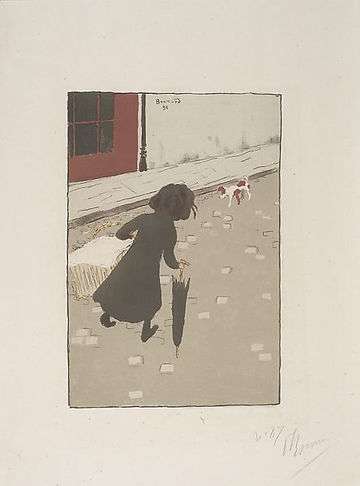
Lithography
Lithography is a type of planographic printmaking which was introduced in 1798 in Munich. Lithographs are made by drawing the design on a slab of limestone or metal plate, using a lithographic crayon or ink. A layer of powdered rosin is rubbed onto the stone followed by a layer of talcum powder. A mild acidic solution containing gum arabic is then brushed onto the stone. The solution chemically reacts with the stone and remedies the greasy image that is drawn with the crayon. It also ensures that the blank areas will absorb water and repel printing ink. The original drawing is then wiped away with a solvent known as lithotine which leaves a spectral trace of the image on the stone. The surface of the stone is then covered with a layer of asphaltum and left to dry, further dampening it with water which is absorbed only in the blank areas. Ink, applied to the stone with a roller, sticks to the greasy image without spilling over to the damp zones, and this process is repeated until inked thoroughly. The stone is placed on the press for printing with the image facing up and a damp paper being laid on top, while they are both covered with a board called tympan. Influential artists from Pablo Picasso to Marc Chagall and Joan Miro have yielded innovative work using this intensive medium.
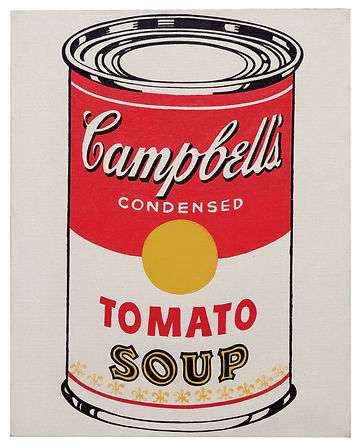
Screen printing, also known as silkscreen printing is a medium popularized by the likes of Andy Warhol and Roy Lichtenstein, in which images are printed through a screen mesh using stencilling techniques. Certain areas of the screen are made impervious to printing ink which creates a stencil, that prevents the printing ink from passing through the screen. The ink that passes through forms the printed image. Stencils which can be made of various materials including fabric, greasy paint, or a design on a transparency, can be applied to the screen made of a fine mesh fabric by transferring a design onto the screen using a photo-sensitive emulsion. Designs can be made by a number of ways – hand-drawn with an opaque ink or printed onto the transparency, or cut out of rubylith, an ultraviolet-masking film. To transfer the design from the transparency, the screen is coated with a thin layer of light-sensitive emulsion, which after having dried, the design is placed against the screen. The screen is then placed in an exposure unit that emits ultraviolet light. When the exposure unit is on, the design blocks the UV light that hardens the emulsion around the image. The emulsion covered by the design remains soft and is then washed out of the screen, leaving the design on the screen. The prepared screen is affixed to a screenprinting table that has holes in the surface that allow a vacuum to hold a sheet of paper in place during printing. Ink is applied along the top of the inside of the screen and then pulled evenly across the image, using a squeegee, an action known as “flooding the screen”. A sheet of paper is then placed under the screen and with the help of the squeegee the ink is pushed through those areas of the screen which are not blocked by the stencil. The resulting impression follows the direction of the matrix.
The question that lingers is – what is a print?
A mongrelized artform in essence, it encompasses everything from stenciled guerrilla graphics of graffiti artists like Banksy to wallpapers, billboards and so on. Printmaking, a fluid medium has now co-opted painting and sculpture to become a meaning machine in the modern world. Residing in the liminal space between disciplines, print questions the very pristine purity of form and celebrates heterogeneity.
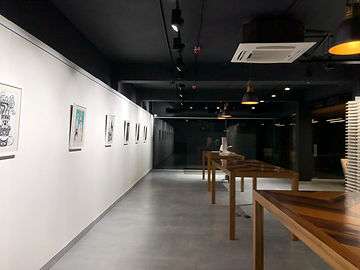
Introducing India’s new contemporary art gallery that primarily focuses on paper-based art and contemporary printmaking techniques, Pulp Society!
Their first show ‘Imprint, After’ opens on the 28th of January, 2020 featuring four talented artists.
Their first show ‘Imprint, After’ can be seen as a means to preserve, revive and reinvigorate printmaking, which like all art is now on the cusp between tradition and modernity. The exhibition breaks away from conventional practices of formal print techniques and departs from the physical transfer of an image from matrix to surface by establishing paper as the facilitator of history, memory, emotion, and narrative. It aims to show how print and paper making act as a tangible metaphor for the remnants of memory, as something which leaves an indelible mark. It will feature works by artists including Bhasha Chakrabarti, Chetnaa, Elena Pereira and Rajyashri Goody whose art practices, each informed by a distinctive telos and rooted in a singular cultural context will articulate intriguing lifeworlds.
An introduction to the artists that will be showcasing their work at the show
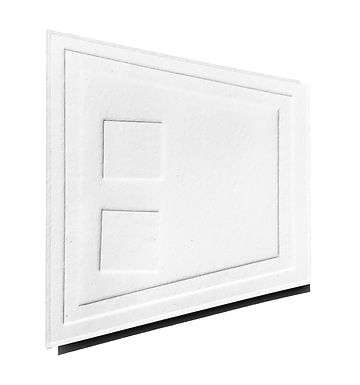
Chetnaa’s minimal abstractions explore print as a constant relationship between dark and light, black and white, negative and positive. Chetnaa is an artist whose practice focuses on the graphic quality of a line as a series of connecting points, and the negative spaces within them as a collection of shadows. In this new body of work, Chetnaa explores the relationship between these dichotomies by creating imprints of negative space into space, as is seen in her delicate white-on-white embossed paper works. She lives and works in New Delhi, with a BA and MA in painting of College of Art, New Delhi.
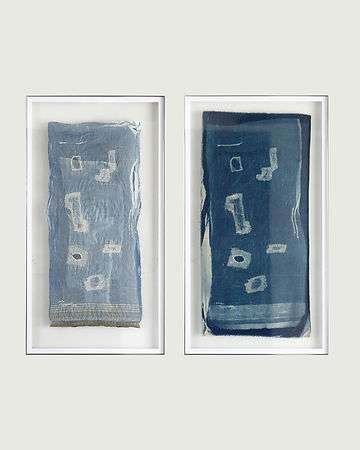
Bhasha Chakrabarti presents two different bodies of work that showcases her interest in the act of repair and mending. Using found materials such as packaging, wrapping papers and old fabrics, Chakrabarti employs methods of darning, mending and pasting to restore low value materials that would otherwise be likely to be discarded.
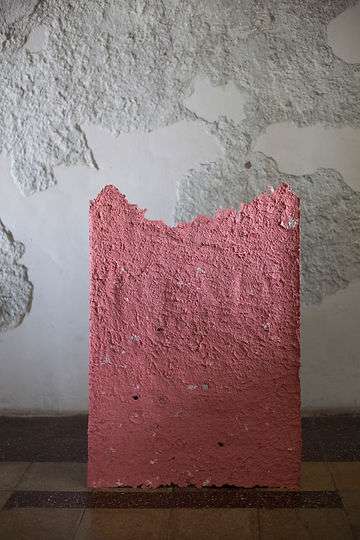
Rajyashri Goody’s expansive practice uses multiple mediums but consistently focuses on social histories of India and the exclusion of Dalit narratives. In her present work, Goody re-appropriates pages from the Manusmriti, a 2nd century BC Hindu law text which is discriminatory in nature, particularly towards lower castes and women. Turning the paper into pulped sculptural forms, Goody attempts to negate the power of both the Manusmriti and of the written word.
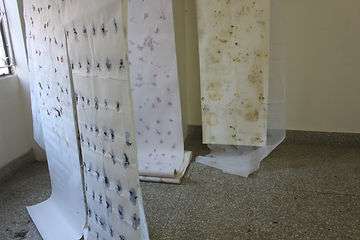
Elena Pereira is a conceptual artist who combines art, design, and performance to create objects which bring different materials into conversation with each other. Showcasing a varied body of work including resin-cast sculptures of found tissues and handkerchiefs, wallpaper sheets hand-blocked with different wildflower blooms, and a performative gesture inviting audience members to partake in a collective ‘memory’ meal — the core of Pereira’s practice is in the idea of creating an archive of residue.
In addition to this exhibition, Pulp Society also has to its credit an inaugural two-week long residency in screen printing, in March at Pulp Studio in New Delhi, which provides uninterrupted time to produce a new body of work and a supportive atmosphere for creative growth and development in innovative printmaking techniques.
Pulp Society is located in B-247, Pocket B, Okhla Phase I, Okhla Industrial Area, New Delhi, Delhi 110020 and is open till 6PM. To know more about Pulp Society’s current shows, residency programs or if you just want to visit their gallery space, visit their website, and follow them on Facebook and Instagram.
